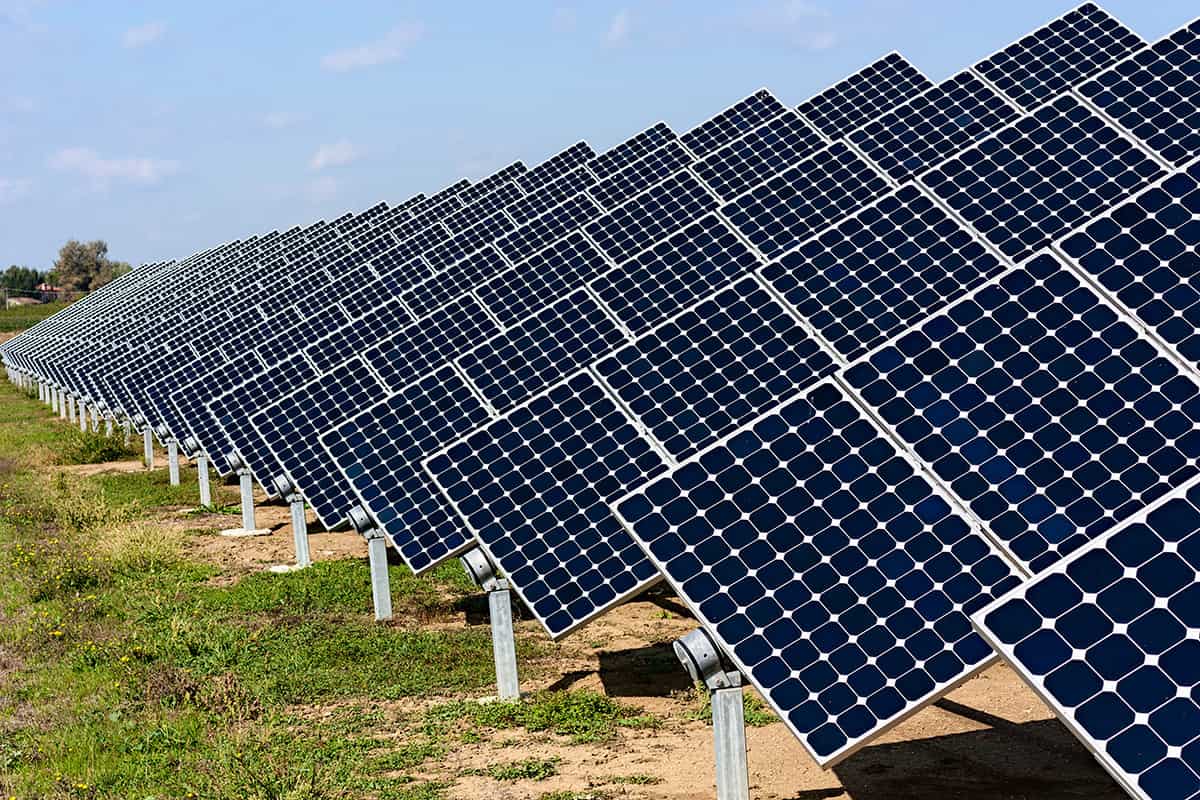
Cheap and simple radiative cooling technologies can significantly increase the performance and lifespan of concentrated photovoltaic systems, according to researchers in the US. They found that a simple radiative cooling structure can increase the voltage produced by the solar cells by around 25%. It also reduced operating temperatures by as much as 36 °C and the scientist claim this could dramatically extend the lifetime of photovoltaic systems.
Commercial silicon-based photovoltaic cells convert around 20% of solar irradiation that falls on them into electricity. Much of the rest is turned into heat, which must be effectively managed. “Photovoltaic efficiency and lifetimes both decrease as temperature goes up – especially in humid environments,” explains Peter Bermel, an engineer at Purdue University. “The loss in efficiency is fundamental to how photovoltaics work.”
This is a particular issue for concentrated photovoltaic systems. While using mirrors or lenses to focus sunlight on solar cells can boost efficiency, it also increases heating. This can offset efficiency improvements and damage the photovoltaic cells, reducing their lifespan.
Complicated and expensive cooling
Current approaches to cooling such systems include forced air or liquid cooling, or the use of heat sinks for conductive heat transfer. But active cooling systems use energy and therefore reduce the net efficiency of the system. They can also be complicated and expensive, increasing system costs and overall reliability.
Another potential option is radiative cooling. Using thermal radiation to dissipate heat requires no additional power and the materials that enable it are often low cost.
To test the performance of radiative cooling, Bermel and his colleagues created a simple concentrated photovoltaic system. In their setup, a mirror reflects sunlight upwards and through a lens to focus it on a solar cell. Using this design, they tested four cooling setups: natural convective cooling with a heatsink, no cooling, radiative cooling, and radiative cooling combined with convective cooling. Radiative cooling was achieved by sandwiching the solar cell between two layers of soda-lime glass, which is known to be a good broadband radiative cooler.
These setups were tested outside, with multiple experiments conducted on different days in various conditions covering a wider range of heat loads. The results are reported in the journal Joule.
Temperature drop
The researchers found that radiative cooling resulted in a 5–36 °C drop in the temperature of the system, depending on weather conditions, compared with the setups without radiative cooling. Bermel told Physics World that the largest temperature difference was recorded with radiative cooling on its own, but the lowest absolute temperatures occurred when it was used in tandem with convective cooling.
These temperature drops caused a relative increase in open-circuit voltage for the solar cells of between 8–27%. This is “roughly proportional to efficiency,” Bermel says. Using temperature data from the experiments the scientists also simulated the impact of cooling on the lifespan of the solar cells. This suggests that radiative cooling could extend the lifetime of concentrated photovoltaic cells by a factor of 4–15.
According to the researchers, the results demonstrate that radiative cooling provides benefits in all weather conditions. But Bermel’s colleague, graduate student Ze Wang, also at Purdue University, cautions that radiative cooling probably will not be suitable for cooling concentrated photovoltaic systems on its own. Other systems would be needed to ensure cooling in all conditions.
Auxiliary cooling mechanism
“Radiative cooling is a very good auxiliary cooling mechanism, which requires no extra energy, performs well at high temperatures, and adds little weight to the whole system,” Wang says. “However, in most cases, radiative cooling serves as an add-on to the existing cooling system utilizing convection or conduction, in order to improve the overall performance.”
However, radiative cooling does not perform well in low-temperature conditions, Wang explains. This is because the temperature difference between the solar cell and the air is too small to fully exploit the potential of radiative cooling. This is a particular issue when there are no low-temperature absorbers, such as a clear sky, around.
Radiative cooling materials are also not limited to the soda-lime glass. “We could work on the materials or structures of the coolers in the future to further improve the emittance profile,” Wang says.
